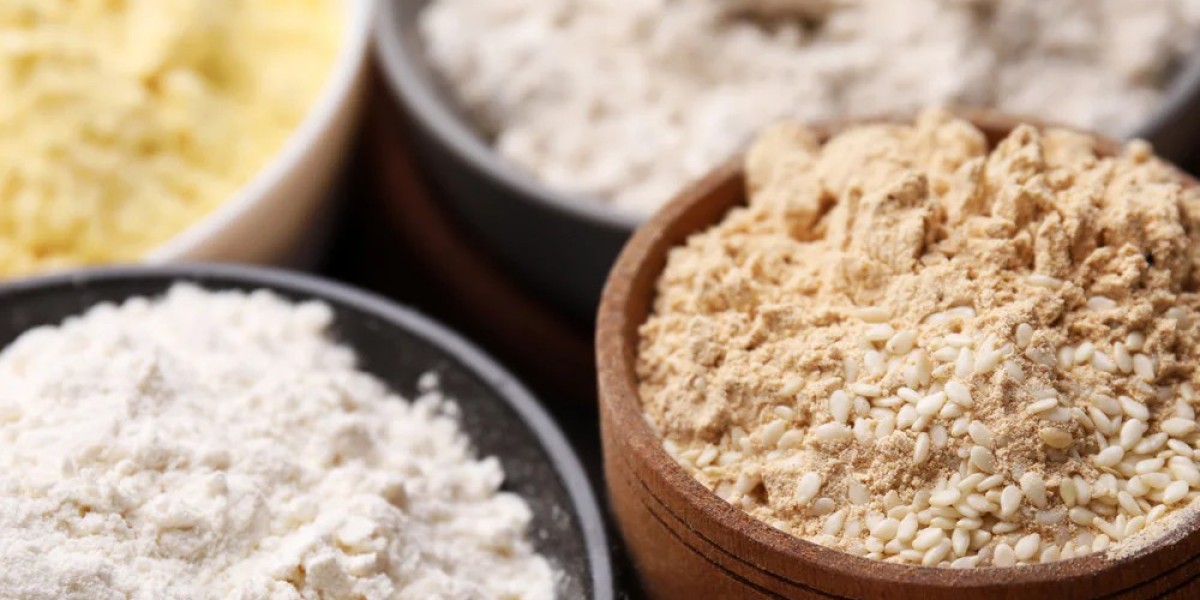Whole wheat flour and maida are two of the most commonly used flours in many kitchens around the world. However, there is often confusion about whether whole wheat flour is maida. This confusion arises because both flours are derived from wheat but have distinct differences in terms of processing, nutritional content, and health impacts. In this blog, we will explore these differences and provide a comprehensive understanding of whole wheat flour and maida.
What is Whole Wheat Flour?
Whole wheat flour is made from the entire wheat kernel, which includes the bran, germ, and endosperm. This type of flour is known for its rich nutritional profile, containing significant amounts of fiber, vitamins, and minerals. The presence of the bran and germ contributes to its slightly coarse texture and darker color compared to refined flours.
Nutritional Benefits of Whole Wheat Flour
High Fiber Content: Whole wheat flour is rich in dietary fiber, which aids in digestion and helps maintain a healthy gut.
Vitamins and Minerals: It contains essential nutrients like iron, magnesium, zinc, and B vitamins.
Lower Glycemic Index: The complex carbohydrates in whole wheat flour are absorbed more slowly, helping to regulate blood sugar levels.
What is Maida?
Maida, also known as refined flour or all-purpose flour, is made from the endosperm of the wheat grain. The bran and germ are removed during processing, resulting in a finer, whiter flour with a longer shelf life. However, this refining process strips away many of the nutrients, making maida less nutritious than whole wheat flour.
Nutritional Profile of Maida
Low Fiber: The removal of the bran and germ means maida has very little fiber.
Fewer Nutrients: The refining process reduces the levels of vitamins and minerals.
High Glycemic Index: Maida is quickly absorbed by the body, leading to rapid spikes in blood sugar levels.
Is Whole Wheat Flour Maida?
Processing Differences
Whole wheat flour is not the same as maida. The primary difference lies in the processing methods. Whole wheat flour is minimally processed, retaining all parts of the wheat grain, whereas maida undergoes extensive refining to remove the bran and germ, leaving only the starchy endosperm.
Health Implications
Due to these processing differences, whole wheat flour is considered healthier than maida. The high fiber content in whole wheat flour aids in digestion, helps control blood sugar levels, and can contribute to weight management. In contrast, the lack of fiber and nutrients in maida can lead to digestive issues and contribute to weight gain and blood sugar spikes.
Uses in Cooking and Baking
Whole Wheat Flour
Whole wheat flour is commonly used in baking bread, muffins, and other baked goods that benefit from its hearty texture and nutty flavor. It is also used in making rotis, chapatis, and other traditional flatbreads.
Maida
Maida is preferred for making pastries, cakes, and other baked goods that require a lighter, fluffier texture. It is also used in making pizza dough, naan, and various types of sweets and snacks.
The Versatility of Whole Wheat Flour in Recipes
Whole wheat flour can be used as a substitute for maida in many recipes, though it may slightly alter the texture and taste. For those looking to increase their fiber intake and improve the nutritional content of their meals, substituting whole wheat flour for maida can be a beneficial choice.
Baking with Whole Wheat Flour
When baking with whole wheat flour, it's essential to note that it absorbs more liquid than maida. This means you may need to adjust the amount of liquid in your recipes. Additionally, whole wheat flour can produce denser baked goods, so using a combination of whole wheat flour and maida can achieve a balance of nutrition and texture.
Conclusion
Whole wheat flour is not maida, and understanding the differences between these two types of flour is crucial for making informed dietary choices. Whole wheat flour offers numerous health benefits due to its high fiber and nutrient content, while maida, although versatile in cooking and baking, lacks these nutritional advantages. By choosing whole wheat flour over maida, you can enjoy a healthier diet without compromising on taste or versatility in your recipes. Remember, whole wheat flour is maida in terms of its origin, but their nutritional profiles and health impacts differ significantly.
Frequently Asked Questions (FAQs)
1. Is whole wheat flour healthier than maida?
Yes, whole wheat flour is healthier than maida because it retains the bran and germ, providing higher fiber content and essential nutrients.
2. Can I substitute whole wheat flour for maida in all recipes?
You can substitute whole wheat flour for maida in most recipes, but it may alter the texture and taste. Adjusting the amount of liquid and mixing it with maida can help achieve the desired results.
3. Why does whole wheat flour have a coarser texture than maida?
Whole wheat flour includes the bran and germ, which gives it a coarser texture compared to the finely milled maida that only contains the endosperm.
4. Does using whole wheat flour affect the shelf life of baked goods?
Whole wheat flour can reduce the shelf life of baked goods due to the presence of oils in the bran and germ, which can become rancid over time. Storing whole wheat flour in an airtight container and refrigerating it can help prolong its shelf life.
5. Is whole wheat flour suitable for people with gluten intolerance?
Whole wheat flour contains gluten, so it is not suitable for people with gluten intolerance or celiac disease. Alternative flours like almond flour or coconut flour are recommended for those with gluten sensitivities.






